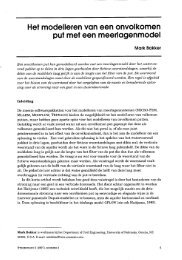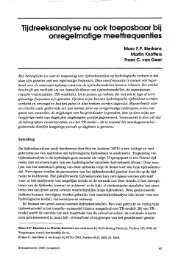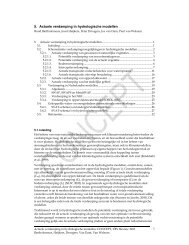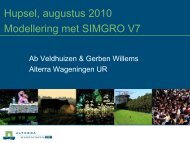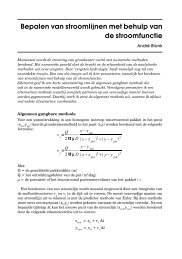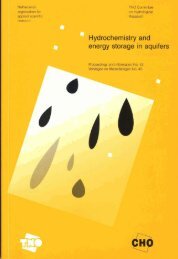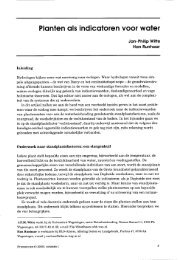PDF Viewing archiving 300 dpi - NHV.nu
PDF Viewing archiving 300 dpi - NHV.nu
PDF Viewing archiving 300 dpi - NHV.nu
You also want an ePaper? Increase the reach of your titles
YUMPU automatically turns print PDFs into web optimized ePapers that Google loves.
AIRFLOW<br />
TUNNEL W/S<br />
3.05 mlsec.<br />
10 crn<br />
Fig. I. Streamlines above the Mk 2 raingauge funnel with a wind speed of 3.05 m/s, taken from<br />
Green et. al. (1972).<br />
, while a much greater proportion of snowflakes is<br />
being deviated because of their larger surface area and their lower fall-velocities.<br />
The results shown in Figure 1 are valid for steady wind flows. In natural field conditions,<br />
the flow will be far from steady: it will be more gusty. Furthermore, the wind flow<br />
is influenced by obstructions, such as bushes, in the vicinity of the raingauge. All these<br />
factors together make that a quantitative description of the process is hardly possible.<br />
In practice, the order of magnitude of the error due to the wind, as far as liquid<br />
precipitation is concerned, is obtained by comparing the catch of the rain gauge of<br />
interest with that of a so-called "pit gauge". This is a rain gauge installed in such a way<br />
that its rim is at ground level. Usually an anti-splash grid is constructed to protect the<br />
pit gauge against splash.<br />
It is generally accepted that a pit gauge is not affected by wind. In the Netherlands, a<br />
<strong>nu</strong>mber of comparisons between the national standard rain gauge and a pit gauge was<br />
carried out (see e.g. Braak (1945), Dey (1968), Colenbrander and St01 (1970)).





